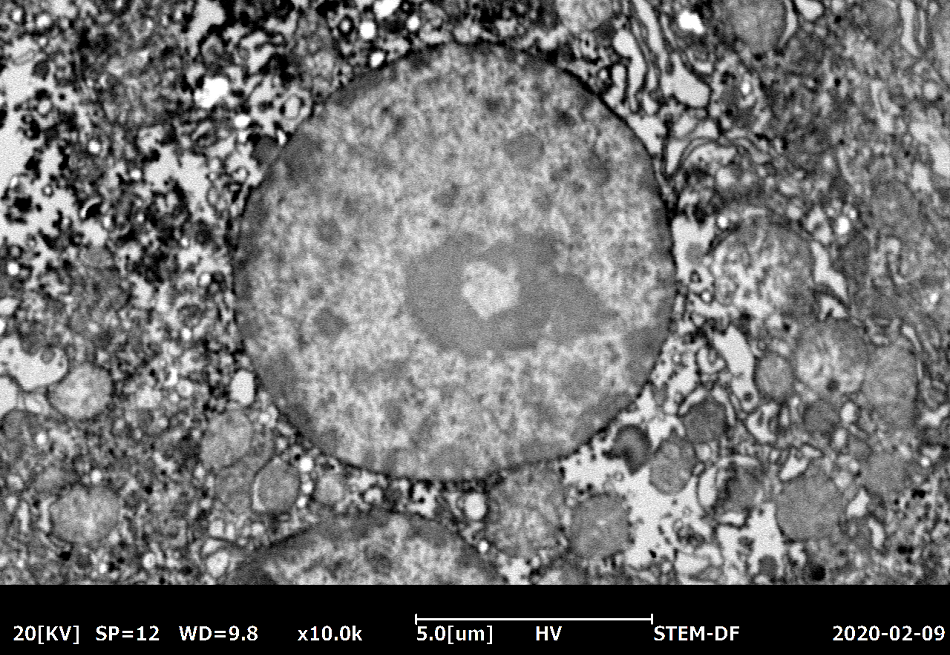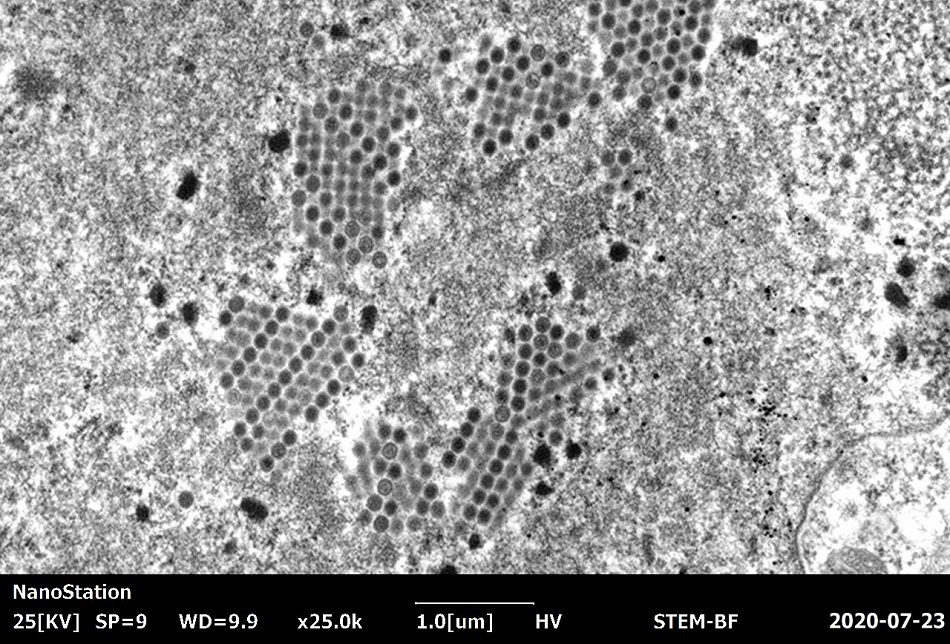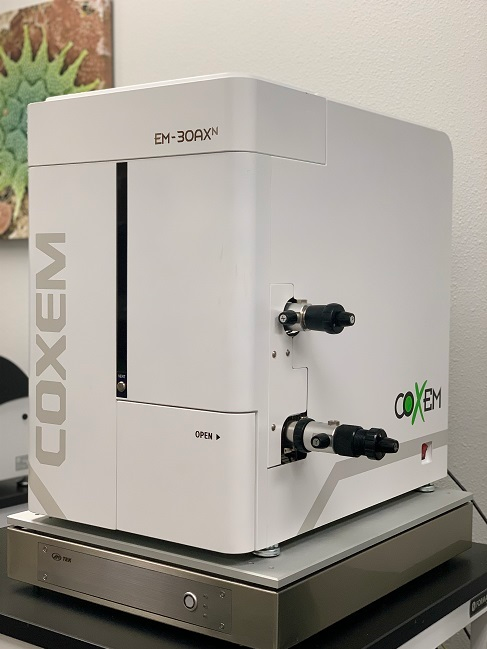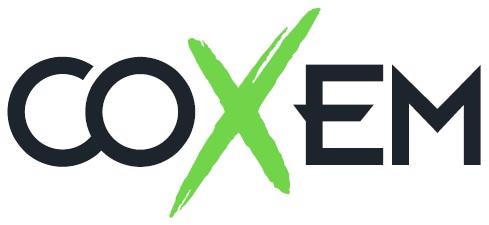The ability to image tissue samples and suspended samples such as proteins, bacteria and viruses at high magnification are key to many life science applications. These imaging tasks typically require access to a TEM (Transmission Electron Microscope) or STEM (Scanning Transmission Electron Microscope). These instruments can be complex and expensive to acquire and use. The STEM accessory for the Coxem EM-30 tabletop microscope allows smaller laboratories and universities to take advantage of the unique properties of STEM without the high acquisition cost and maintenance typically associated with these instruments.

Fig 1. Mouse kidney imaged using the STEM detector on the Coxem EM-30

Fig 2. Adenovirus imaged at 25,000 X
The STEM accessory for the EM-30 attaches to a side port on the SEM, and retracts when not in use (see Fig 3). Utilizing a standard TEM grid, the STEM detector is able to take advantage of the EM-30’s wide 1 - 30 kV accelerating voltage range to deliver stunning STEM images in a tabletop system.
Unlike other STEM modules that use a platinum mirror to collect an image with the SE detector, the Coxem STEM module provides a true STEM detector positioned below the TEM grid sample, allowing both Bright and Darkfield imaging modes. And by utilizing lower accelerating voltages, the STEM accessory is also able to produce high-contrast images from samples that may be vulnerable to electron beam damage such as polymers and biomaterials.

Fig 3. EM-30AXN Tabletop SEM with STEM detector at Insertion position using the side accessory port.
The STEM accessory includes both the detector and a special TEM grid holder that mounts directly to the SEM Stage. The TEM grid holder can accommodate up to 4 separate TEM grids and has been designed to accommodate EDS analysis without any obstruction or special adjustment.
Powered by Coxem’s NanoStation software, all instrument functions are displayed in a logical, intuitive manner, allowing both novice and experienced users to produce high-quality STEM images with minimal training.

This information has been sourced, reviewed and adapted from materials provided by COXEM Co. Ltd.
For more information on this source, please visit COXEM Co. Ltd.